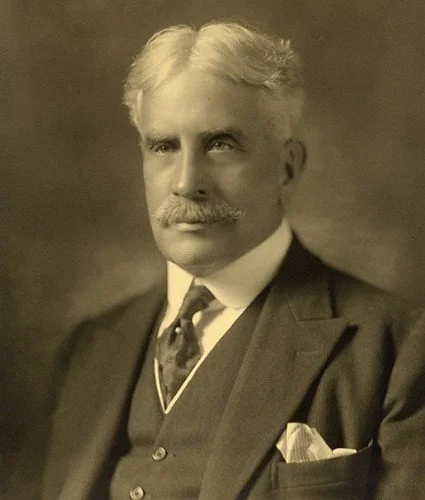Reciprocity Election 1911: Does the Stolper-Samuelson Theorem Explain Canada’s Major Political Upset?
After the second half of the 19th century, it was evident that Canada had to pursue an economic model based on its natural factors of production abundance and the ability to specialize in already-used properties. Nonetheless, the national policy's correction by the Liberal government of Wilfrid Laurier had brought change and a possibility of expanding in the international market.
The Reciprocity agreement was the foremost opportunity for internationalization, provided that the Liberals won the 1911 election. According to the Stolper-Samuelson theorem, Canada should not pursue protectionism and use its comparative land advantage and the opportunity of Reciprocity. The win of the Conservatives in the 1911 election shocked the entire world. The Stolper-Samuelson theorem made different predictions than what happened in the actual elections because it failed to take into account social and political factors. Yet, the Stolper-Samuelson theorem is valuable for the explanation of such historically important events. There might still be issues after the inclusion of interdisciplinary parameters and politico-social factors, as occurred during the Reciprocity election of 1911.
Laurier was the PM heading into the last quarter of the 19th century, and he corrected the problems with the national policy that failed under John Macdonald's protectionism. With Clifford Sifton's help, Laurier managed to shift the immigrant issue policy and started bringing in Canadian people who were experienced and could develop their independent farms in the Prairies and the West. Laurier even corrected the expensive and damaging monopoly of the Canadian Pacific Railway (CPR) with the Crow's Nest Pass Agreement that allowed the company to access the rich mineral deposits in British Columbia. Canada's comparative advantage comes from land abundance and the low opportunity cost for natural capital and land use. What is lacking are capital and labour; products deriving from them come with a higher price when imported. Based on the theorem, specialization occurs instantly and thoroughly. At the beginning of the 20th century, the Canadian agricultural production of grain and dairy (especially wheat) boomed with the national policy's improvement; Reciprocity would skyrocket Canadian production profits and would lower burdens for the country’s exports.
Canada was at its best for the development of a specialized export-oriented economy, and the Liberal government had worked intensively to provide an environment for the farmers and the sustainable but extensive use of the Canadian land. The US was ready to move towards a deal for the reduction of tariffs and the move towards freer trade. The question of what went wrong can be answered only after consulting the election results and analyzing the vote of farmers and landowners while combining the theory with the sociopolitical factors that changed the outcome. To summarise the election outcome, 35% of the 1908 Liberal seats were lost, and the Conservatives won 60%.
The reasons that might be able to explain this downturn in the predicted Liberal win are the following:
Agriculture was pushing for freer trade. Still, this time, it was without the fruit farmers since the Reciprocity agreement eliminated products for which the specific farmers had a cost advantage.
There was fear among the new workers and farmers about exposure in a market with the US since the latter's producers had a better climate to work in and produce.
Other provinces, such as Ontario, Quebec, and the Atlantic, urgently needed to supply domestic demand for their products.
They also feared that if they started having the exact cost for their natural products as the US, they would have to increase their input costs and risk their profits
Nonetheless, these were not the only reasons for division around the country and the issue of Reciprocity. There are additional cases that cannot be covered by the Stolper-Samuelson trading theory but played an equally vital role in the surprise of the election. Laurier had agreed to the Canadian Naval Bill of 1909, creating the Canadian Navy to provide British help. With the Conservative-Nationalist coalition, Borden and Bourassa could work with the nationalist spirit, regardless of the Canadians' ethnicity or religion, to attack Laurier, with the new opposition named the “Autonomists." The strategy manifested, and following the previous statements, the Conservatives could impact British territories such as Ontario to show the government's disloyalty to the British and the alliance with the US for Reciprocity. Simultaneously, the Nationalists of Quebec could focus on the Naval Bill as a sellout to the British while stating that the Reciprocity was a way of taking Canadians' minds off the Bill.
The social factor and the propaganda that unified the divided Canadian ethnicities and worked at the Liberal expense were not far from the political factors that led to the progressives' defeat. More specifically, the political problems in the Liberal party and internal issues that worked against the agreement's credibility were significant. Another political factor was the Conservative organization's power in Manitoba, British Columbia, and, most importantly, Ontario, which was established by the existing dominant state of the party machinery and the patronage tone advocated for the people there.
When considering the Stolper-Samuelson approach to understand the 1911 election, it is essential to state that there was nothing wrong with the construction and the analysis of the situation through the model. The prediction did not manifest in the landowners' vote. The agricultural sector was caused by the second thoughts of the people possessing the land factors of production. Nonetheless, their fear of a sudden and drastic change in Canadian policy from a domestic economy to an export-oriented country was not the only aspect that affected their judgment.
While following the Conservative propaganda, the Liberal policies were exploited in the best way possible. The political agenda, finally, was vital for removing Laurier from office since it used the second thoughts of the farmers, along with the strengthening of the manufacturers and the labour protectionists, to combine them and create the "Autonomists,"; a powerful opposition to Reciprocity and a type of party coalition that changed the predicted outcome of the election upside down.
Edited by Antonio Brunetti & Surya Sriram
Featured Image “Robert Borden, prime minister of Canada 1911-1920" by Ross Dunn is licensed under CC BY-SA 2.0.”

